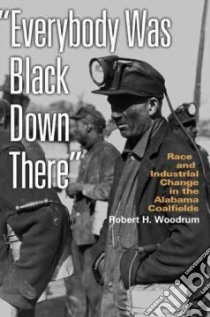Everybody Was Black Down There - 9780820328799
Un libro in lingua di Woodrum Robert H. edito da Univ of Georgia Pr, 2007
- € 22.30
- Il prezzo è variabile in funzione del cambio della valuta d’origine
Drawing on union, company, and government records as well as interviews with coal miners, Woodrum examines the complex connections between racial ideology and technological and economic change. Extending the chronological scope of previous studies of race, work, and unionization in the Birmingham coalfields, Woodrum covers the New Deal, World War II, the postwar era, the 1970s expansion of coalfield employment, and contemporary trends toward globalization.
The United Mine Workers of America's efforts to bridge the color line in places like Birmingham should not be underestimated, says Woodrum. Facing pressure from the wider world of segregationist Alabama, however, union leadership ultimately backed off the UMWA's historic commitment to the rights of its black members. Woodrum discusses the role of state UMWA president William Mitch in this process and describes Birmingham's unique economic circumstances as an essentially Rust Belt city within the burgeoning Sun Belt South. This is a nuanced exploration of how, despite their central role in bringing the UMWA back to Alabama in the early 1930s, black miners remained vulnerable to the economic and technological changes that transformed the coal industry after World War II.
Informazioni bibliografiche
- Titolo del Libro in lingua: Everybody Was Black Down There
- Sottotitolo: Race And Industrial Change in the Alabama Coalfields
- Lingua: English
- Autore: Woodrum Robert H.
- Editore: Univ of Georgia Pr
- Collana: Univ of Georgia Pr (Paperback)
- Data di Pubblicazione: 01 Gennaio '07
- Genere: Lingua Inglese
- Argomenti : African American coal miners Alabama History African Americans Alabama Social conditions Coal miners Labor unions Alabama History 20th century
- Pagine: 304
- Dimensioni mm: 228 x 152 x 19
- ISBN-10: 0820328790
- EAN-13: 9780820328799


